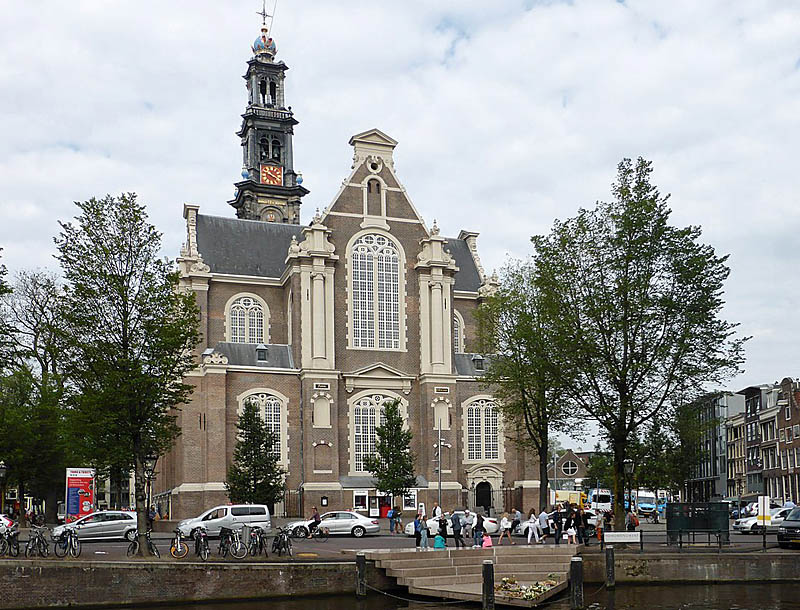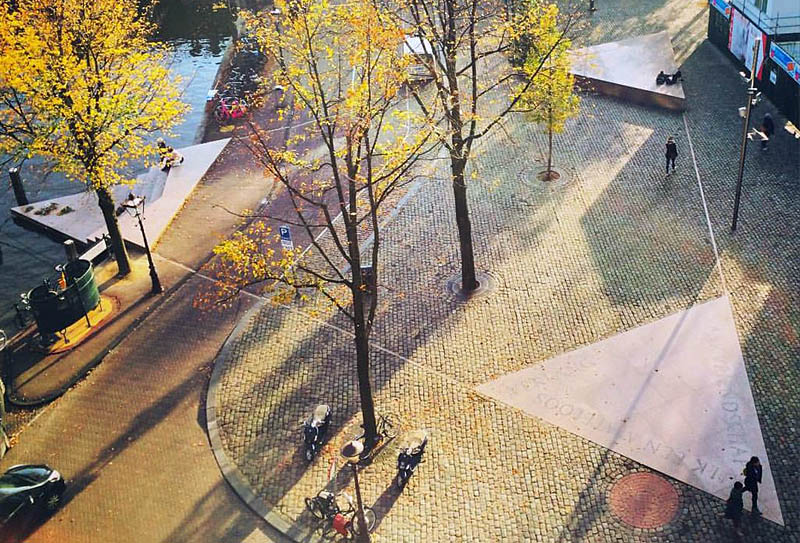Discover the Homo Monument a Tribute in Pink Granite
A pink granite triangle straddles the square behind the Westerkerk in Amsterdam. It symbolizes the sign homosexuals were forced to wear during Nazi occupation. This monument commemorates gay men and lesbians who were imprisoned or executed during WWII because of their identity.

A History of Protest
In 1970, gay activists laid a lavender wreath at the foot of the National Monument on Dam Square a few hours before the annual national memorial service on 4th May started. Their intention was to draw public attention to the atrocities to homosexuals during the Second World War.
This illegal wreath laying continued all through the 1970s. Each year the police removed the wreath before the official ceremony began.
In the early 1980, the government granted approval for a homo memorial. Funds were raised and the pink triangle was embedded in the pavement in 1987.

The Meaning Behind the Triangles
Each point of the pink triangle has a specific orientation and meaning: One side of the triangle points to Keizersgracht and represents the jetty from which gay people embarked trains heading for concentration camps.
The ground level triangle points to the Anne Frankhuis. The inscription reads: ‘Naar vriendschap zulk een mateloos verlangen,’ a quote from the Dutch gay poet Jacob Istrael de Haan (1881-1924), and translates as ‘Such an Endless Desire for Friendship.’
The raised triangle points to COC, the Dutch Association for Homosexuals.
PINK Point: LGBTQ+ Info Centre
Across the square, you will find Pink Point, a small information booth and souvenir shop. It is Amsterdam’s LGBTQ+ info centre. Here, you can get free maps and guides to gay- and lesbian-friendly bars, clubs, restaurants, and upcoming events.
If you are in Amsterdam the first week of August, be sure to get information about Amsterdam Pride when canals, streets and squares colour pink.


